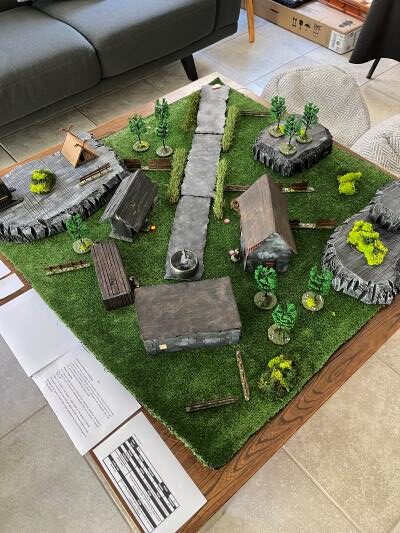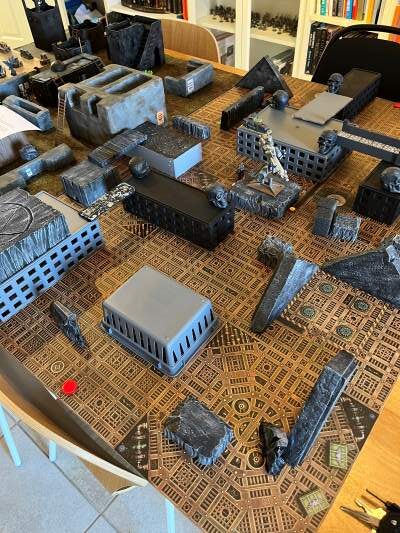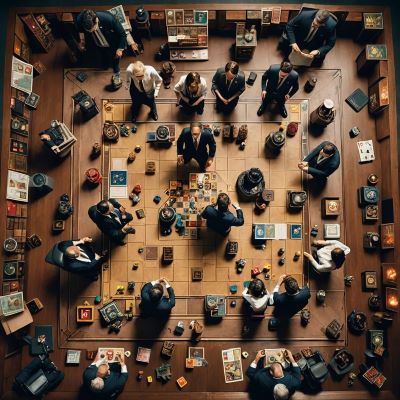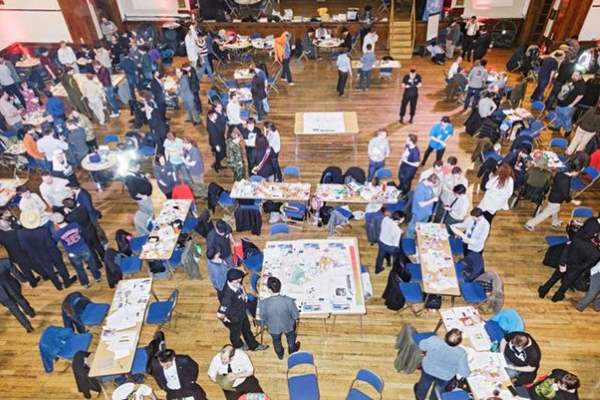Following on from my last experience running a multiplayer game I’ve been exploring emergent play. In parallel to this I have developed a mini event for six participants that I hope will create an emergent narrative experience for all involved. I’ve included mechanics to ensure that no two games are alike and every decision can lead to unexpected outcomes. Welcome to Echoes of Xenos!!
While this is a campaign of sorts with players playing multiple games, it is going to take place over the afternoon/evening of a single Saturday. Keeping it short and sweet will foster maximum engagement. Resulting, I hope, in lots of player interaction with the narrative and each other.
Setting the Stage: Embrace the Unknown
I’ve always had a soft spot for the INQ28 movement. This is based loosely on an old Games Workshop game that was more roleplaying game than wargame. It pits bands of Inquisitors, secret agents of the Imperium, against one another. Different ideologies, agendas and objectives make for a murky espionage fueled setting that truly fosters creativity in scenarios, art and model making. As such I’ve set this event squarely within this milieu.
The campaign is based in the western reaches of the Ultima Segmentum, specifically in the enigmatic Lupin System. As commanders of various factions, players are on a mission to retrieve the lost research of the radical Inquisitor Tiberius Glaze. While they all have the same core objective, secret objectives, emergent narrative and sworn enemies will make this anything but straight forward.

Factions in Pursuit
As mentioned, multiple factions are on the hunt for Glaze’s elusive research. Each with its unique motivations and secret agendas:
- Puritan Inquisitor of the Ordo Hereticus: Determined to destroy the heretical research.
- Rogue Trader: Sees profit in capturing and selling the research.
- Tech Priest of the Adeptus Mechanicus: Aims to harness the research for their own mysterious purposes.
- Two Radical Inquisitors of the Ordo Xenos: Both seek glory through the continuation of Glaze’s work. However, the glory can only go to one!
- Rogue Inquisitor of the Ordo Malleus: Believes the research is linked to a prophecy foretelling the downfall of the Imperium.
As you can see, there is already a lot of scope for conflict. But for emergent play to flower we need additional complications.
The Mechanics: Fueling Emergent Narrative
This campaign is structured to encourage emergent play, where the unfolding story and strategic interactions create a unique and engaging experience for every participant. As such the details of each battle will be randomly determined. Firstly, there will be three rounds of 1v1 battles . At the start of each round, factions will randomly draw opponents and battle locations. Each location has a shared primary objective and a set of secret objectives. After objectives are revealed, faction leaders select their roster for the engagement. The final round will involve all the players competing against one another in a large multiplayer scenario.
Like the last game I ran we’ll be using the Space Weirdos ruleset. This is simple enough for players to pick up the concepts easily. However, it has enough complexity to allow for strategic play. A great balance. It also plays fast. Letting us complete multiple games over the course of the event.
Roster Management
Each faction begins with a 125-point Space Weirdos list, but for each scenario, players can only field three agents from their roster. This limitation means roster management is crucial, as losing agents can significantly impact your strategy and the outcome of future battles. It also means that agents need to be carefully chosen for each game, as each have different advantages. I’m interested to see how this plays out. Will players be more cautious in their tactics? When will they commit their more valuable agents?
Locations and Objectives:
To keep things uncertain battles will be fought over 4 different locations. Each is rich with potential for emergent play, featuring primary objectives and a variety of special secret objectives specific to each. Here’s a glimpse of what to expect:
- Abandoned Orbital Station: Retrieve data from the lone servitor.
- Research Station on the Moon: Get a copy of the research papers.
- Ag Settlement: Identify and interrogate Glaze’s old companions for the location of the genetics research base.
- Space Port Relay Station: Hack the last communication from the Research Station.
Winning a game at each location gives the victorious player a secret clue that details some of the back story and the villainy that Inquisitor Glaze was up to.
Combining roster management, narrative clues, secret objectives and a range of game boards will keep the players on their toes. Decisions will have to be made with imperfect information. Stories will emerge. I cant wait to see how the game evolves.




Points and Clues
An emergent narrative may not be enough for some players so I have introduced a competitive element in the Campaign Points (CP) which are awarded based on performance
- Win Primary Objective: 2 CP
- Win Secret Objective: 1 CP
- Beat sworn enemy in battle: 1 CP
The warband with the most CP will start the final scenario with a crucial advantage – the research genetic material. A tally of points on a whiteboard near game control will keep everyone on their toes. Announcing changes in the leaderboard at the end of every round should enhance the competitive element.
It’s my hope that this element spurs players to strive for a win and push their secret objectives for each round to get that valuable additional CP.
The Grand Finale
The final showdown takes place at a secret location (no spoilers), the fifth moon of Lupin III. Here, factions must secure the genetic material – the ultimate prize. With dangerous abominations lurking, this climactic battle will push the players strategic skills to the limit and create unforgettable moments of emergent play. Will they work together to get run the gauntlet or fall into mad competitive scrambling to get the prize. Only time will tell.
Preparation
In an effort to make the game as immersive as possible I’ve prepared individual player briefings, faction rosters, thematic clues and ideological clashes. Additionally, I’ll be using my collection of miniatures and terrain to its fullest. I’m hoping that this will give the players enough to really lean into the setting and make the most of the game. This has take a lot of work, but I’m hoping it’s worth it.
Once we’ve played I’ll write about the experience and my learnings from it. Will emergent narrative occur? I’ll also see whether this format may be utilized in a different form to teach/enhance leadership skills.
Wish me luck!!




